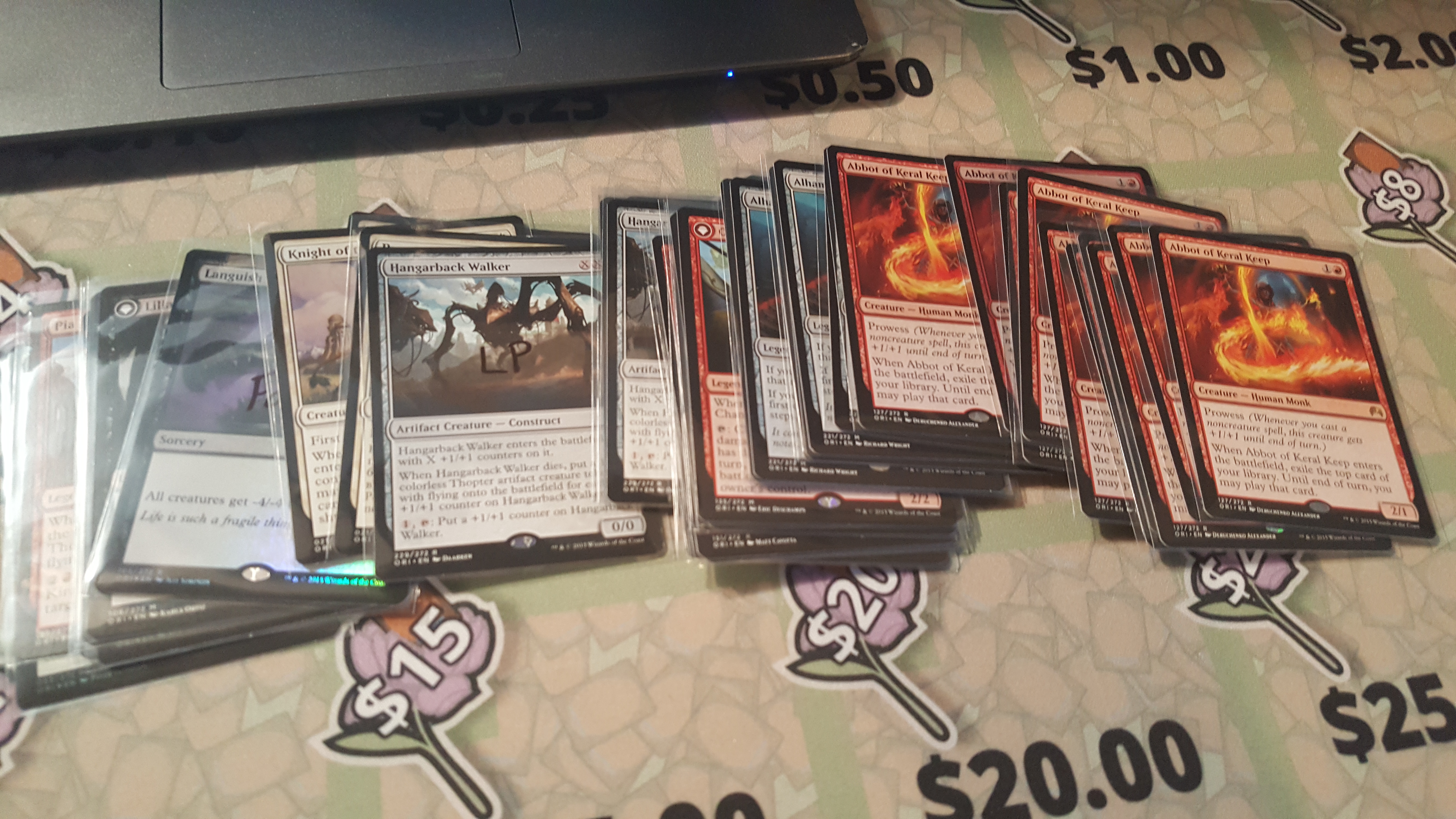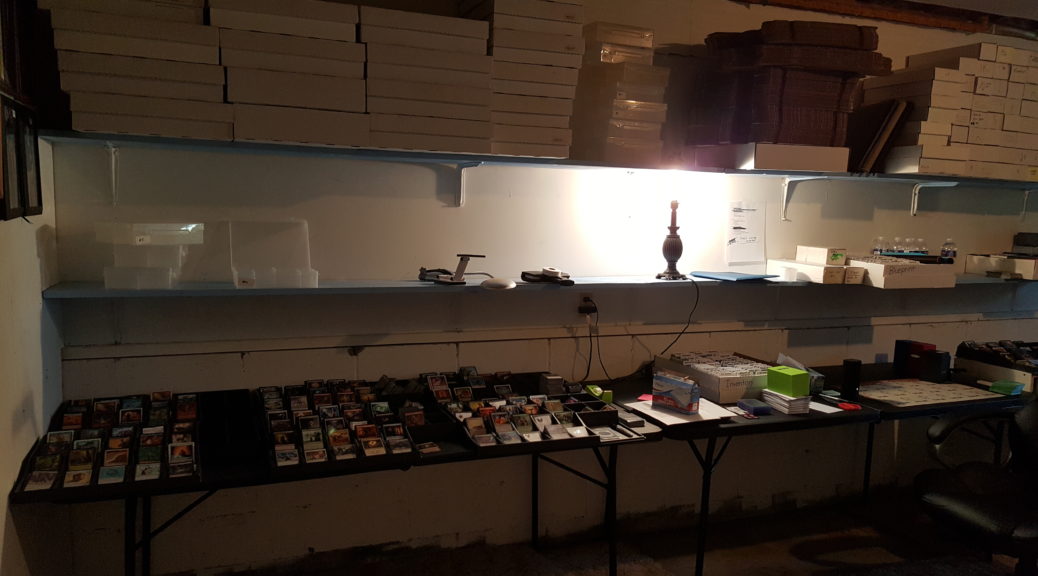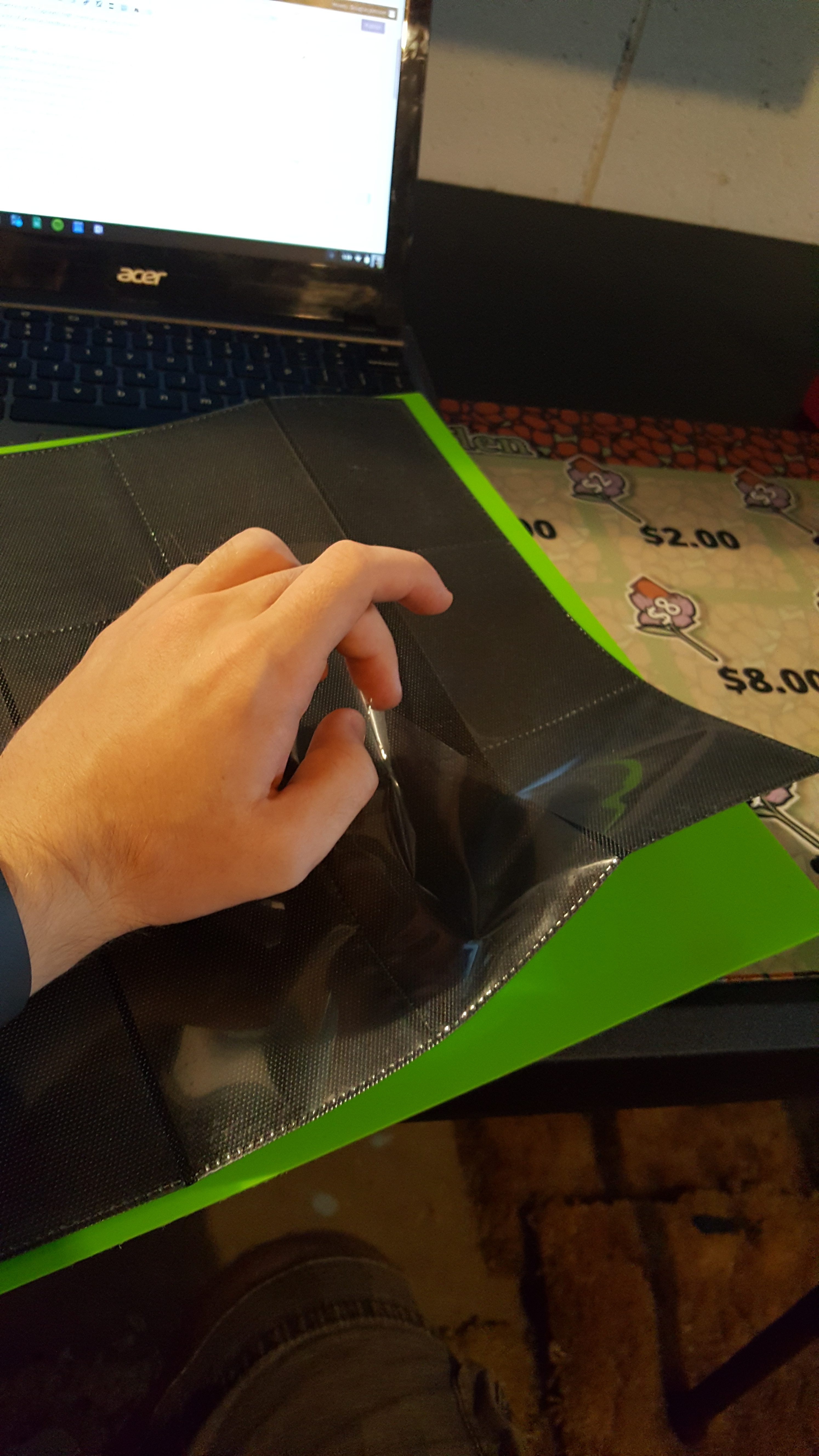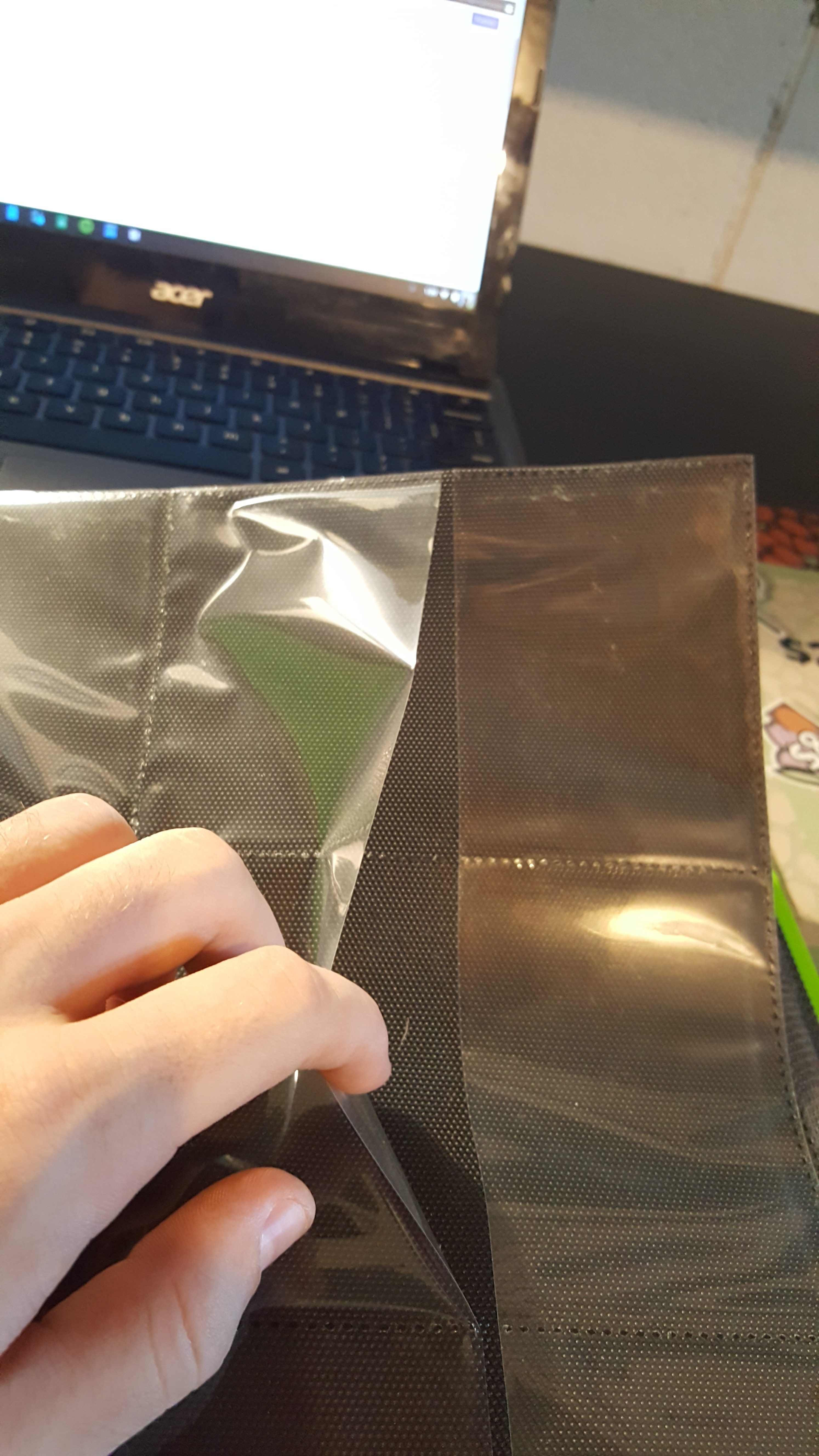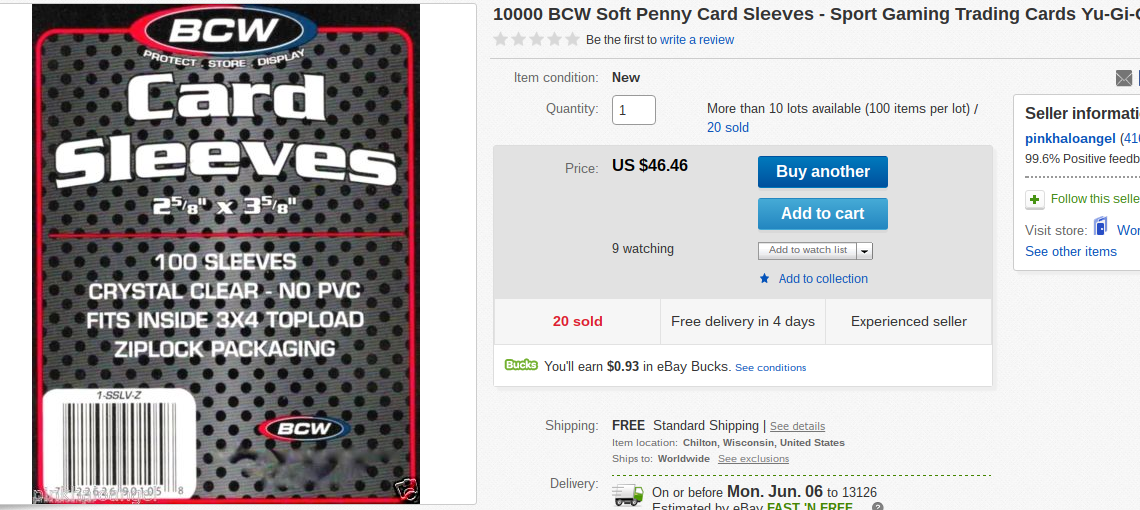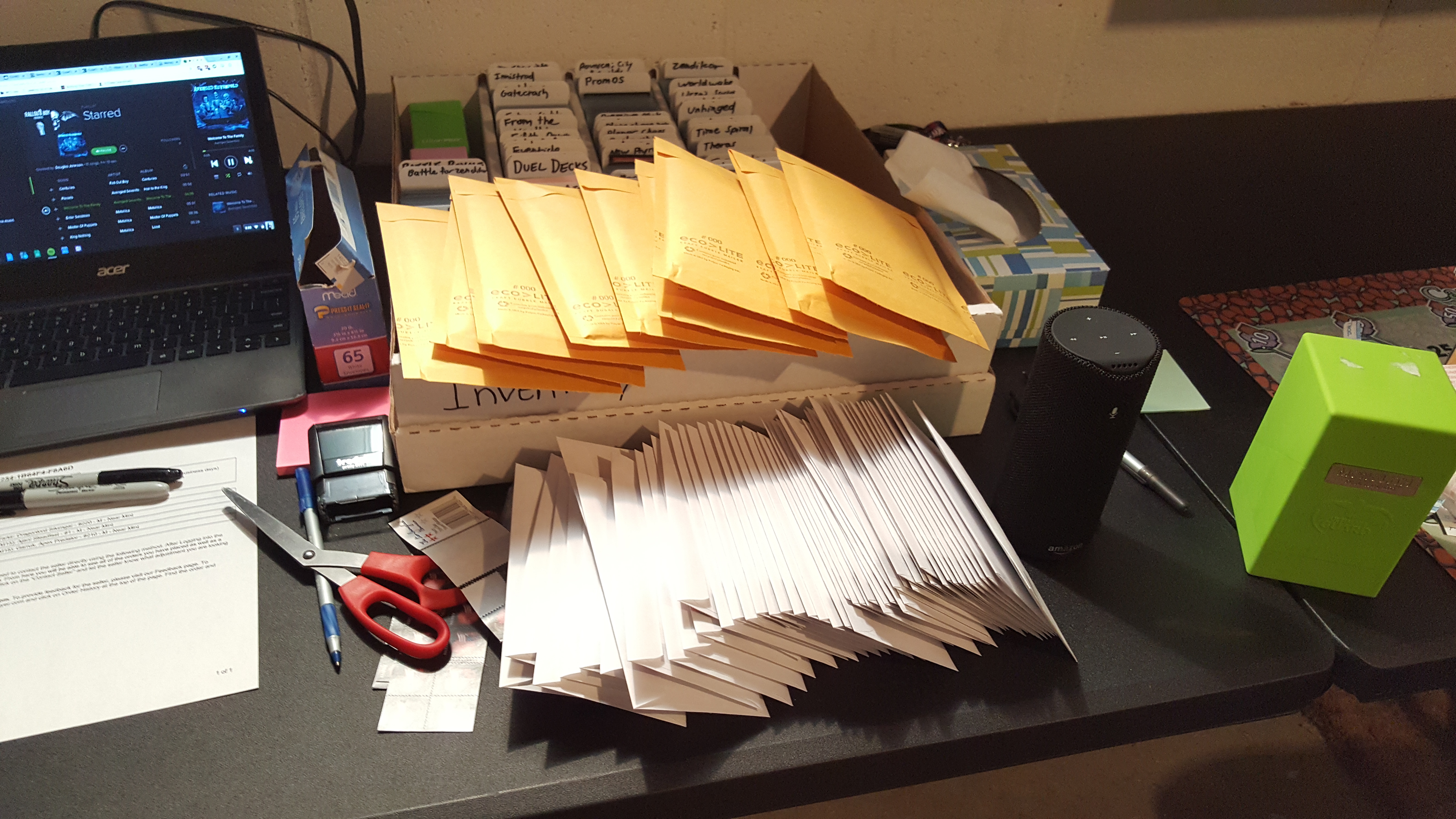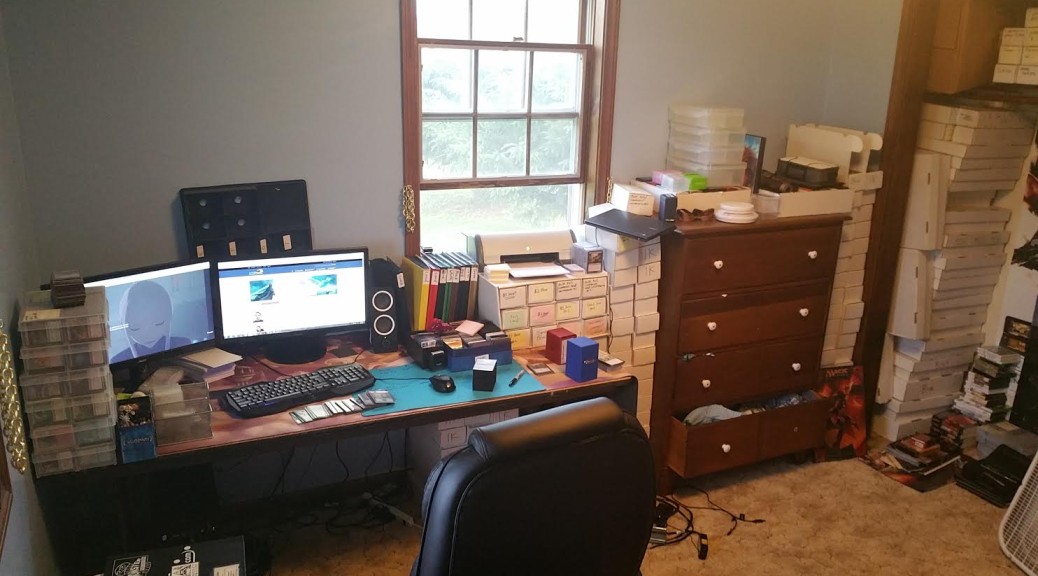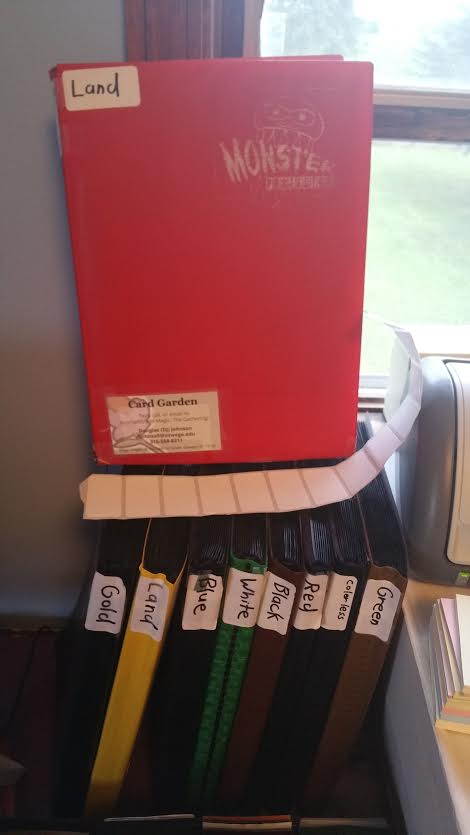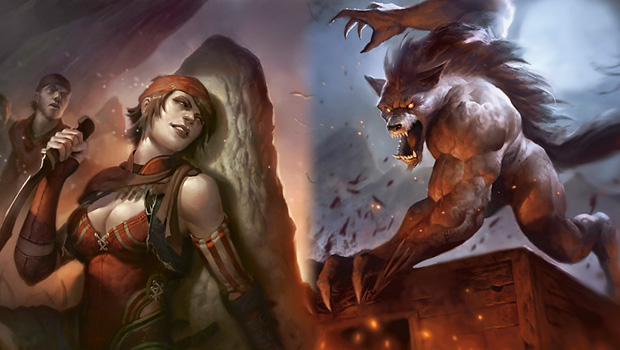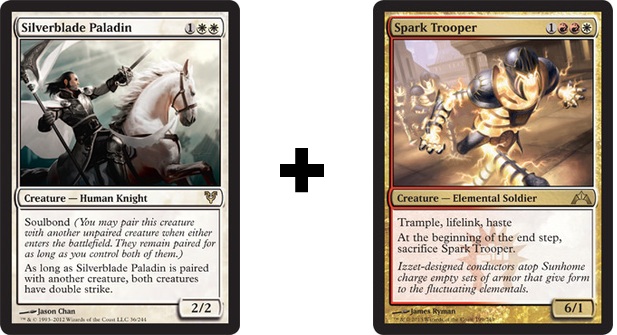By: Douglas Johnson
Everyone knows sequels are always better than originals, right? Right? There has certainly never been a time where the creator of a movie/book/article thought, “You know what? The second iteration of this will clearly be worse than the first. I should stop now while I’m ahead.” Do you know why? Because winners make sequels.
Here’s a sequel for you. Sequel to what? This right here. There’s no time (or word count) to waste, so let’s get started!
Red
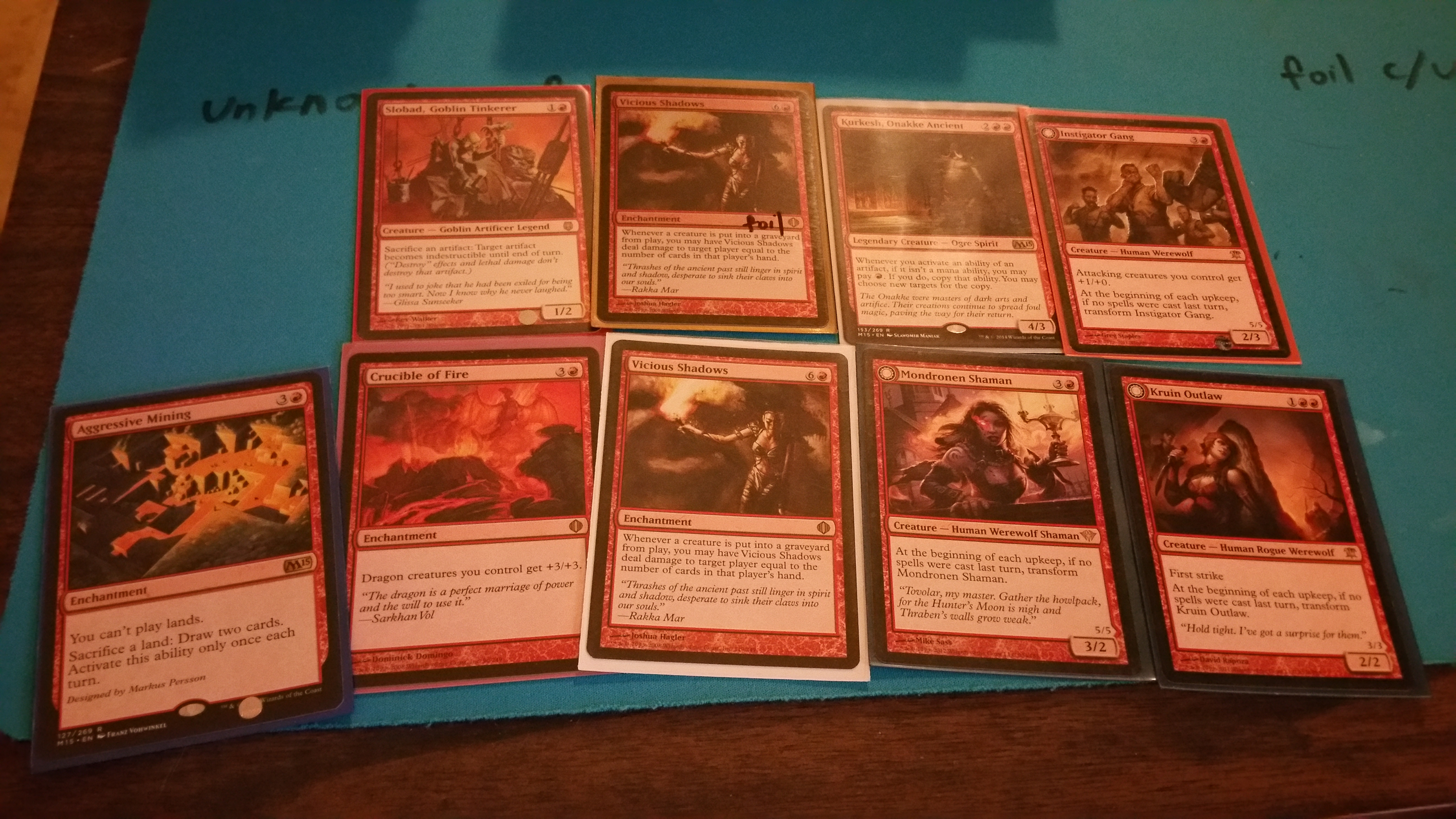
What Gets to Stay?
Maybe I’m crazy, but I think Vicious Shadows is absolutely absurd in any R/B/X deck that causes lots of creatures to die. You can insta-kill someone for playing a Wrath effect, assassinate planeswalkers with ease, and create a political nightmare just for having a Wrath or sacrifice outlet of your own at the ready. Sure, it’s a seven-drop, but it’s seen zero additional printings and is from Shards of Alara, which stopped being opened quite a while ago. Normal copies are definitely less attractive than foils, but it’s something that I’m setting aside whenever I get additional copies.
Aggressive Mining might just be a symptom of my addiction to Loam, but this card has got to be broken eventually, right? Maybe it’ll be a dumb combo enabler in five years, or maybe it’ll help mono-red decks fire off those last few points of damage… I don’t know. Nobody’s going to pick them out of my bulk rare boxes for the moment, so I might as well hoard them until I get to be that mad scientist who runs through town screaming, “I TOLD YOU SO!!!”
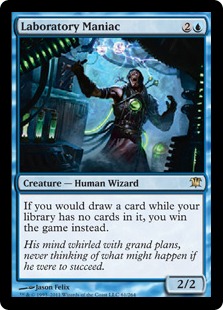
Meanwhile, Crucible of Fire is anything but a crazy longshot. This card is pretty much everything I ever want in a spec: cheap, consistent, and proven. It managed to creep up to $5 before getting shot down to bulk rare status after the reprint and has been slowly climbing up ever since. I can definitely see this hitting its previous ceiling, and maybe go even higher with the new influx of dragon players. You’ll be waiting a little while for this one to take off, but you don’t have to cross your fingers and hope you’re right. These are easy trade targets at a dollar, and I mental fist pump every time someone else bulks them out to me.
What Has to Go?
Alright. The time has come. I’ve been waiting for this for a few years now. I’m finally taking these stupid werewolves out and jamming them into my $.25 boxes. When they first dropped down to near-bulk rare status back in Innistrad Standard, I correlated these to the recent trend of vampires that had increased in price due to casual appeal, like Captivating Vampire. Surely there would be a number of players who start playing in a couple of years who want to go back to the days of werewolves in Magic, right? Well, maybe not. I’m finally willing to face reality after seeing these for the first time in about a year, and I’m ripping off the scab. I hope these make some casual player happier for $.25 than they made me for $.50 to $1 each.
I definitely thought that Slobad would be a lot more popular than he appears to be, especially with how easily he slides into the relatively popular Daretti deck.
Aside: I just looked up Daretti on MTGPrice.com in order to link the card page to this article. I saw that a certain vendor that rhymes with Schmoll and Schmoad had thirteen copies in stock for $2.89, and ships for free if the value of singles is over $25. I just bought all of those copies, because the only planeswalker who should sit under $5 is named Tibalt. If you can find cheap copies of Daretti, buying in now is probably not as bad as buying thirteen copies of Tibalt.
Foils of Kurkesh probably aren’t too bad at $2, but you have to expect to sit on them for a while. If I had to choose between those and foil Vicious Shadows, I’d go with the seven drop that can win the game with a small bit of assistance. On the other hand, the ship already sailed with foil Slobad. I definitely wouldn’t buy in now.
Green
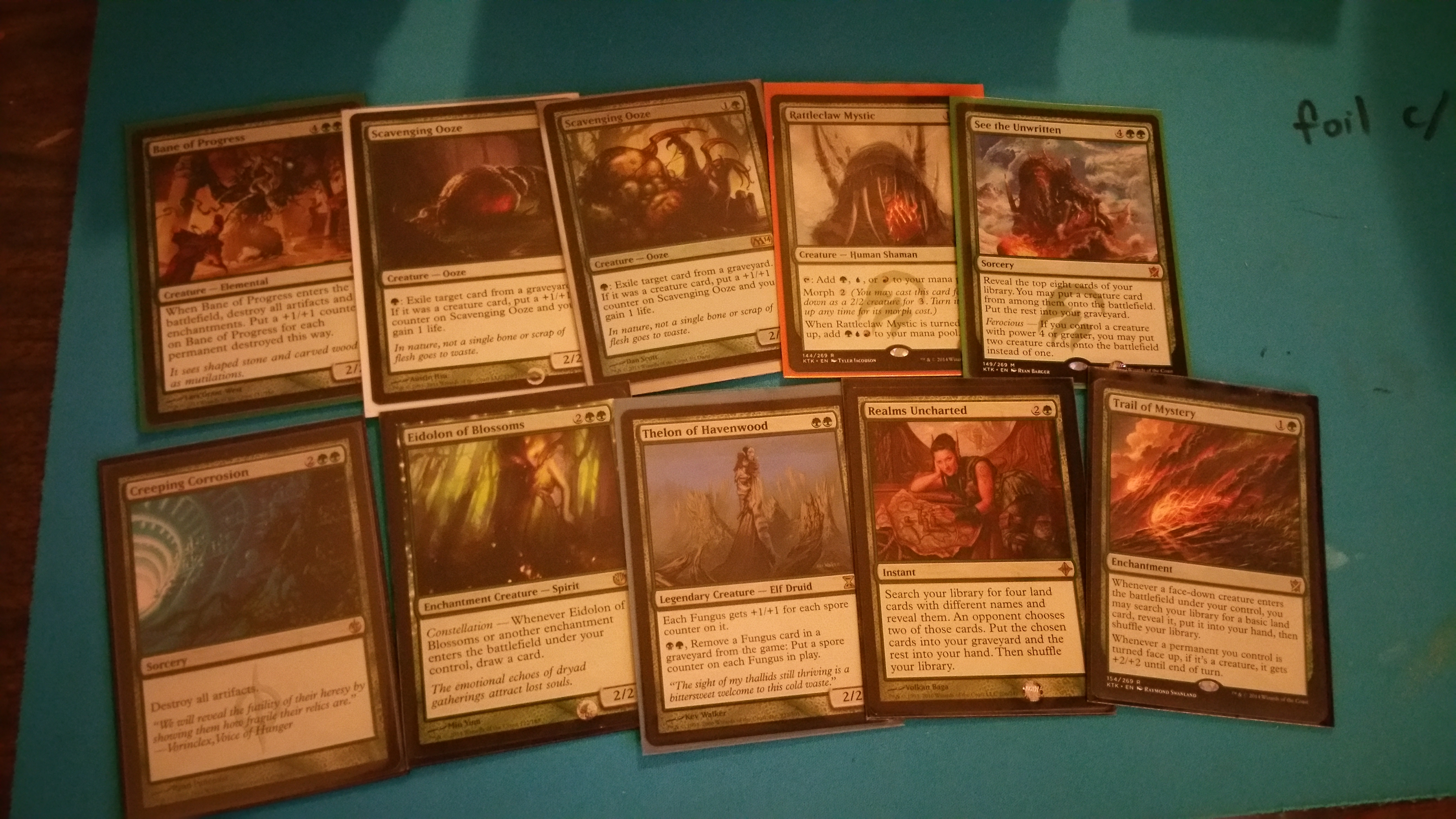
What Gets to Stay?
Alright, so maybe I’m wrong to judge the financial applicability of cards based on how much they destroy me in my casual games of EDH. Then again, I’ve lost almost every single game where Bane of Progress has been cast, either because it destroyed all of my permanents or it wiped someone else’s entire board and then got thrown at me for a ridiculous amount of damage. While I would love a foil copy, I think this is one of the few cards from Commander 2013 that is worth looking into as a single-card spec. If you can still find these for under a dollar or need them for your decks, I think they’re a fine pickup. I feel like I’m losing out every time I sell one out of my case for $1.50.
See the Unwritten used to be available for bulk mythic pricing, until Battle for Zendikar was announced. It shot up to $4 to $5, and has been hovering there ever since. Personally, I see no reason to get out now. If it can jump by $2 just from the set being announced, I’m willing to take the risk of holding onto them until the spoilers start coming in. If we get Eldrazi reprints, there’s no way this doesn’t go to $10 on hype alone. I’ll be glad to sell for $8 into that hype and cash out as soon as I see the opportunity. I still think these are excellent trade targets, and I’d buy in under $4.
You looked at Realms Uncharted on that list, and you knew what this paragraph was about to be composed of. It’s a Gifts Ungiven, but for lands. As WOTC tests the waters and continues to print interesting non-basic lands for us to play with, I continue to hoard these up at bulk rare prices with the hope that the card is one day broken by a brewer in Modern. Battle for Zendikar is also more likely than most other blocks to have silly non-basics, thanks to the land subtheme. I actually wanted to buy a ton of these from the SCG Spring Sale, but someone else had beaten me to it and they were all sold out.
If Birds of Paradise doesn’t end up being included in Magic Origins, then we have a shot at Rattleclaw Mystic going up. If BOP does end up being included, then, well…. let’s not talk about that. It makes me sad. Either way, I’ve been trading for these at $1 when my partner wants the hot Standard staples (and when there’s not any nice Crucible of Fires to take off of his or her hands). It’s not my optimal choice of spec due to the Standardness and unreliability, but it’s better than nothing.
What Has to Go?
Creeping Corrosion managed to creep itself out of the “Pure Bulk rare” pile, into the $1.50 pile. GET HYPED. I don’t think this is as universally applicable as Torpor Orb as a sideboard card, though, so I’m comfortable selling out after effectively doubling up after I buylist these. Anyone need Creeping Corrosions?
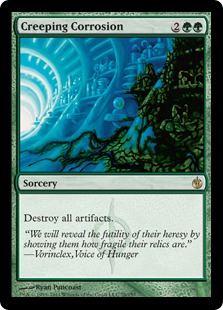
I picked up a large number of Scavenging Ooze promo packs a couple of years ago as part of a deal for buying out the inventory of a failed LGS, and I didn’t manage to sell all of them before they hit rock bottom at $5. I’ve had them in here ever since, hoping that they made a slow climb upward. Unfortunately, that never happened. I’m going to try and start liquidating some of these, as Ooze’s time in the sun for Legacy, Modern, and Standard has passed for now.
Eidolon of Blossoms and Trail of Mystery were both obvious failed and meager attempts to shoot for the moon and wish that a keyword themed deck appeared in Standard and became tier-one. The difference is that while G/B Constellation was actually a deck, Eidolon did practically nothing, and the G/W Morph/Manifest deck didn’t care about searching for land as much as it cared about gaining four hundred life with Mastery of the Unseen. Look away before your eyes burn out from my shame.
Pulling up the rear, we have Thelon of Havenwood, or as I like to call him: “Another card that I should have picked up foils of instead of regular copies in order to sell into the currently intangible Tiny Leaders hype.” Foils would have been a very nice play a few months ago, but I don’t think the non-foils go anywhere. Into the bulk boxes they go.
Multicolored
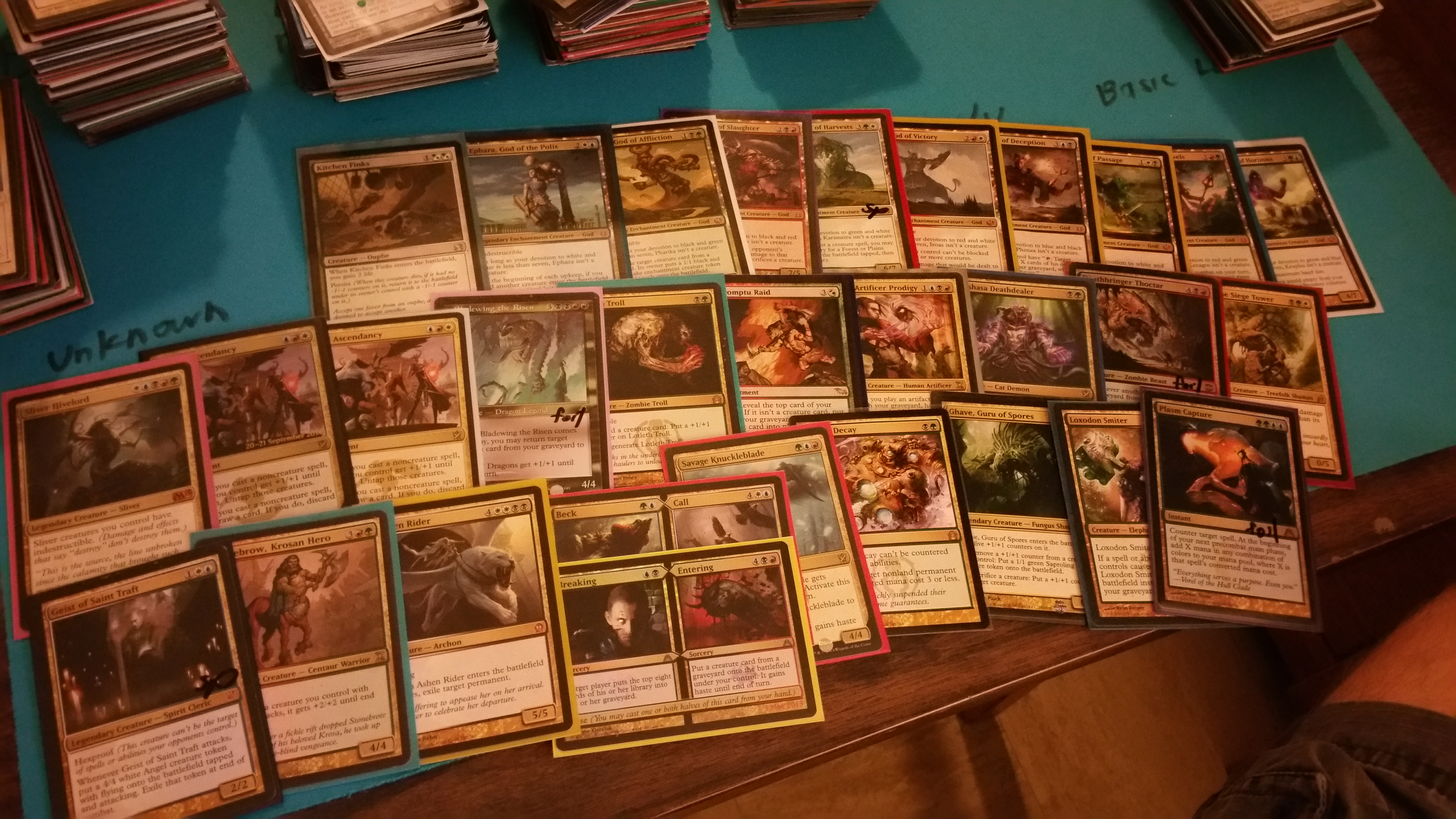
What Gets to Stay?
Alright, there’s lots of stuff in here that I haven’t looked at in several months. Let’s get cracking at the easy ones of Beck // Call and Breaking // Entering. I picked up all of these during the Dragon’s Maze fiasco, while everyone was complaining that the set was utter garbage. Thankfully, they were mostly throw-ins, but I’m still firmly in the camp that maybe these will eventually be broken in Modern (or scarce enough when the nuclear war starts and destroys 99 percent of the Magic cards on the planet). However, there is at least one Dragon’s Maze card here that I think has potential. My fellow writer Ross Lennon convinced me to go in on foil copies of Plasm Capture, which can be found for less than the cost of a pack of Dragon’s Maze. Mana Drain comparisons aside, I really like this as an EDH foil pickup.
Speaking of EDH foils, am I the only one who considers Deathbringer Thoctar to be absolutely absurd? He keeps the board clear of X/1s by himself, while providing death triggers and being capable of machine gunning the board (or a player) down when things start dying. While the non-foil got reprinted in the Commander 2013 set, I don’t think this card deserves to be a bulk rare foil. If you try him out in your R/B/X Commander deck, I don’t think you’ll be disappointed. In fact, I think you’ll want to go out and get a foil one.
Other than Keranos, I like the rest of the gods with the new tuck rule for EDH. While Ephara and Iroas are probably the two worst of the ten to lead a deck, selling UW gods for $1 still makes me wince. Phenax seems like he would normally be ahead of his brethren (and… sistren?) due to the fact that he has his mill casuals helping to buy him, but I’m liking these as trade targets that won’t be dropping anytime soon. Turning Standard cards into gods seems like a smart move, especially since these can still be found in binders.
The low for Sliver Hivelord was $4, which was where I picked up my copies. I’m going to hang on for a little while longer, and wait for them to hit $12 to $15 before I sell. Every other five-color sliver lord is at least $15, and I don’t think Hivelord deserves to be half the price of his buddies.
Even though Treasure Cruise got hit and the metagame has shifted a bit, I refuse to quit making money on Jeskai Ascendancy. It’s drifted back down to $1.50, which I think is a fine place to start buying back in. It’s an enabler in such a wide variety of decks that I don’t think we’ve seen the last of it in either Modern or Standard, and it could definitely jump back up to $4 on a new list that proves itself in a higher level event.
Lastly, Angel of Despair is three times more expensive than Ashen Rider. Just think about that for a minute. I’ll concede the point that Angel of Despair is an angel, but other than that? I really like Rider at bulk mythic pricing here. I don’t see where you can lose very hard.
What Has to Go?
I have literally no idea what I was thinking when I put Mishra, Stonebrow, and Impromptu Raid in here. Maybe I was hoping there would be silly Modern decks at one point? I don’t remember, but I certainly think that my head is clearer now, and they don’t deserve the space. I can’t imagine a list where it’s worth it to Raid in an Emrakul instead of just using Through the Breach. Into the quarter box with all of you, with no supper.
Savage Knuckleblade, Deathdealer, and Lotleth Troll are all migrating into the $1 bin. I actually bought copies of Deathdealer before the spike, but didn’t manage to move them in time before the hype died down. If I sell for $1 then I technically broke even, but that’s still losing money in my book. As for Knuckleblade, I’m still shocked that a 4/4 for 3 with those abilities couldn’t swing it in today’s Standard. It just goes to show that no matter how good a card is, it actually needs a deck.
My Geists and Dorans have finished appreciating, but I was too busy “forgetting” about them to maximize on my value, so I missed out on selling into the hype. I can still jam them onto my TCGplayer store for a nice profit, but it’s not as nice as it could have been. As for Kitchen Finks, I thought it would be a fantastic idea to buy a bunch of these for $2 each from someone who was selling off a relatively large Modern collection. While it was a nice deal, I’ve had trouble liquidating all of the copies for a decent profit. I can only move so many Finks, so I jammed some copies in here to forget about. I should have just buylisted them and saved the space and cash for other exciting opportunities.
End Step
I’m glad I did this exercise. First of all, I learned that I should actually check the status of the cards in these “spec” boxes more often. While it’s great that Geist, Doran, and several other cards jumped while they were in the box, I only make money if I actually take them out of the box, and then put them in someone else’s hands while taking money for them. Every time I put something in or take something out, I think I’m going to do at least a quick skim through to see if anything’s changed or if I need to do some adjusting to the contents of the box.
Secondly, I fixed the organization method of my spec box. While the majority of my collection is sorted alphabetically, my spec box was primarily sorted by color, similarly to the pictures above. I broke down and took the time to alphabetize all of the cards in the box, utilizing my new sorting tray that I got from BCW Supplies. This will make it much easier to categorize things and keep track of quantity instead of just jamming new copies of Necroplasm into the black section of the box, and having a rough estimate of how many foils I have left.
You’ve certainly noticed by now, but my favorite types of specs are the ones like Realms Uncharted, Aggressive Mining, and Plunge into Darkness. There’s such a low buy-in and such a potentially high payoff. You literally can’t lose when you buy bulk rares for $.10 each, and these are the gems to set aside and keep your fingers crossed over.
So what are your thoughts on these two articles? I’ve talked my hands off about what I’ve been letting go of and holding onto, and I’m interested to hear if there’s anything that I could have missed or should just be letting go of. Thanks as always!
